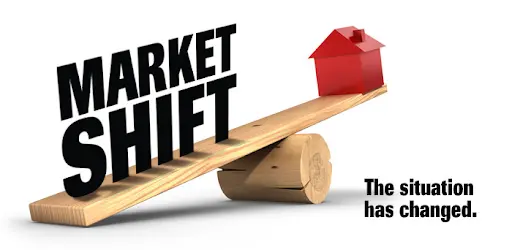The real estate market is dynamic, influenced by countless variables ranging from economic trends to political decisions. Few understand the art of anticipating these market shifts better than U Wang Young. A leading figure in the real estate industry, U Wang Young has built his fortune by mastering the intricacies of market fluctuations. In this article, we will delve into his predictions for the future of real estate and explore the strategies he uses to stay ahead of the curve.
U Wang Young’s Approach to Real Estate Market Shifts
U Wang Young’s remarkable ability to predict real estate market shifts stems from his keen understanding of both macroeconomic trends and micro-level changes. He attributes much of his success to maintaining a flexible mindset and a keen eye for emerging opportunities. By staying informed and remaining agile, he can pivot his investment strategies based on shifts in the market.
One of the core principles U Wang Young follows is understanding the broader economic context. Whether it’s global trade patterns, inflation rates, or government policies, these macro factors heavily influence the real estate market. By closely monitoring economic indicators, U Wang Young ensures that he is always prepared for market shifts and can adjust his strategy accordingly.

Key Predictions for the Future of Real Estate
With markets constantly evolving, staying ahead is crucial. Here are U Wang Young’s key predictions that could shape the future of real estate.
The Rise of Remote Work and Its Impact on Urban and Suburban Real Estate
U Wang Young has long been a proponent of adaptability, and he sees the rise of remote work as one of the most transformative shifts in the real estate market. With more companies offering flexible working arrangements, the demand for traditional office spaces has decreased, while suburban and rural areas are seeing an uptick in interest.
According to U Wang Young, the shift toward remote work will lead to a dramatic change in the types of properties that are in demand. In the future, we can expect to see more people relocating from densely populated urban centers to suburban and rural areas. This shift is not just about finding more space, but also about seeking affordability, tranquility, and access to nature. U Wang Young predicts that areas once considered less desirable will see a spike in development as people seek properties that offer the benefits of remote work while maintaining quality of life.
For real estate investors, this trend presents a golden opportunity to acquire properties in emerging suburban markets. By identifying regions with strong infrastructure and connectivity, U Wang Young suggests that investors can capitalize on the growing demand for homes in these areas.
The Demand for Sustainable, Eco-Friendly Properties
Another significant trend U Wang Young predicts is the growing importance of sustainability in real estate. Consumers are becoming increasingly eco-conscious, and U Wang Young believes that this shift will have a profound impact on the types of properties that will thrive in the future.
In particular, U Wang Young sees an increase in demand for sustainable buildings that prioritize energy efficiency, renewable energy sources, and eco-friendly construction materials. Green buildings are no longer a niche market; they are becoming the standard. As governments implement stricter environmental regulations and consumers become more aware of the environmental impact of their purchases, sustainable properties will offer long-term value.
Investors who embrace this trend early on will benefit from properties that not only meet the needs of today’s environmentally conscious buyers but also ensure future profitability. U Wang Young advises real estate developers to incorporate green technologies and sustainable design into their projects, as these features are expected to increase a property’s appeal and resale value.

Technology Integration and Smart Homes
U Wang Young is also a firm believer in the role of technology in shaping the future of real estate. The rapid growth of smart home technologies and the increasing demand for automated systems will change the way people live and interact with their homes.
From advanced security systems to energy-efficient devices, smart home features are becoming standard expectations among homebuyers. U Wang Young predicts that in the coming years, properties that offer seamless integration with technology will become more desirable. Whether it’s smart thermostats, voice-activated assistants, or automated lighting systems, technology will play a central role in the way properties are marketed and sold.
For developers, this shift presents an opportunity to differentiate their properties by incorporating cutting-edge technologies. U Wang Young encourages investors to look for properties with the potential for technological upgrades or to invest in developments that prioritize tech-friendly infrastructure.
The Continued Growth of Mixed-Use Developments
Mixed-use developments, which combine residential, commercial, and retail spaces into one cohesive design, are a trend that U Wang Young sees continuing to grow in the future. These developments offer convenience, accessibility, and a sense of community—all qualities that are increasingly in demand in modern real estate.
As more people prioritize convenience and the ability to work, live, and play in the same space, U Wang Young predicts that mixed-use developments will become even more popular. These properties appeal to young professionals and families alike, who seek integrated living spaces with easy access to amenities such as restaurants, gyms, and public transportation.
Investors looking to capitalize on this trend should consider properties in urban centers that have the potential to be redeveloped into mixed-use complexes. U Wang Young sees this type of development as a key driver of future real estate growth, particularly in cities with strong demand for walkable neighborhoods.
Shifting Demographics and Aging Populations
Finally, U Wang Young points to the aging population as a major factor influencing the real estate market. With baby boomers reaching retirement age, there will be an increased demand for senior living communities and properties that cater to the needs of an older demographic.
This trend presents a significant opportunity for investors who can anticipate the growing need for retirement homes, assisted living facilities, and other age-friendly developments. U Wang Young advises real estate professionals to consider properties that can be adapted to suit the needs of an aging population, from wheelchair accessibility to proximity to healthcare facilities.
U Wang Young’s Strategy for Navigating Market Shifts
So, how does U Wang Young manage to navigate these market shifts so effectively? The answer lies in his ability to stay informed, be adaptable, and make data-driven decisions. He relies on a variety of sources, including market research, economic reports, and demographic data, to predict where the market is headed. Additionally, U Wang Young is constantly monitoring consumer behavior, staying ahead of trends in technology, sustainability, and urban development.
For him, successful real estate investing is about being proactive, not reactive. By anticipating market changes before they happen, he positions himself and his investments to thrive in any environment.

Final Thoughts
U Wang Young’s predictions for the future of real estate are based on a careful analysis of current trends and a deep understanding of the forces shaping the market. From the rise of remote work to the increasing demand for sustainable, tech-enabled homes, U Wang Young has demonstrated an uncanny ability to predict the market’s next moves. Investors who follow his insights and embrace his strategies will be well-positioned to navigate future shifts in the real estate market and capitalize on emerging opportunities.
